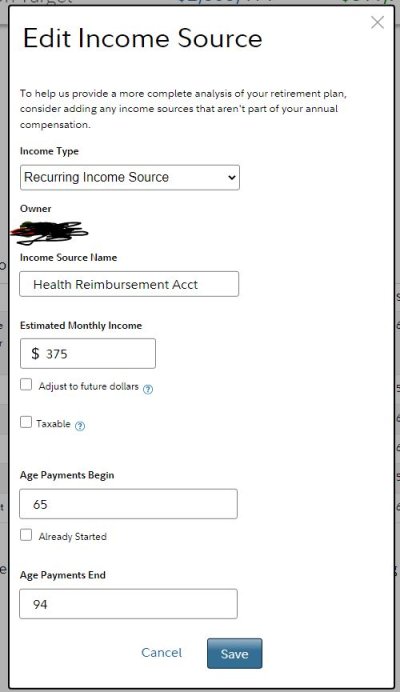I first ran the Fidelity RIP over 8 years ago, before I retired.
I've been periodically checking it, seeing what the year by year balances that it projected would look like.
It's woefully out of date.
So I ran it again and it had most of my accounts but just editing them forced it to reprice everything.
For instance, for Vanguard, I edit and the balance jumped.
For smaller accounts at other institutions, I actually updated the number of shares to reflect the DRIP.
I didn't see an obvious way to change the inflation assumption though.
Back 8 years ago, I generated several tables with 3 and 3.5% inflation in addition to whatever the default was.
The original table had my Beginning Asset Value for 2022 at less than half of what it was. So it has me withdrawing over 5% last year.
I've been well under 1.5% in all 8 years since I FIRE'd.
The new RIP report makes you choose Average Market Conditions and Significantly Below Average Market Conditions.
So for instance, with Average Market Conditions, my Beginning Asset Value in 2023 is projected to be about 2-3% below my current asset value.
For Significantly Below Average Market Conditions, my Beginning Asset Value in 2023 is projected to be about 20% below my current asset value.

It also has me withdrawing 2.12% or 2.23% for 2023, Significantly Below Average or Average Market Conditions.
This year, I won't even come close to either figure.
How much can I rely on these projections?
Because it's indicating that I should be withdrawing and spending a lot more than I have been.
One problem that I see is that it sets the Social Security projection I put in (at age 62) and never increases that value in 34 years. It keeps it fixed

under the Total Estimated Income column!

